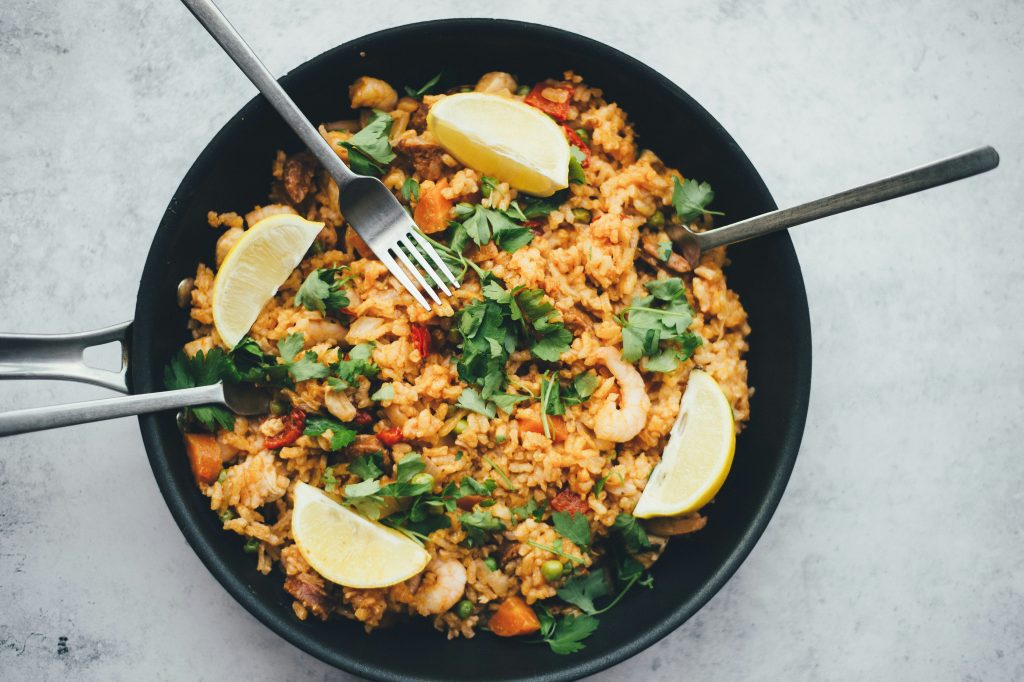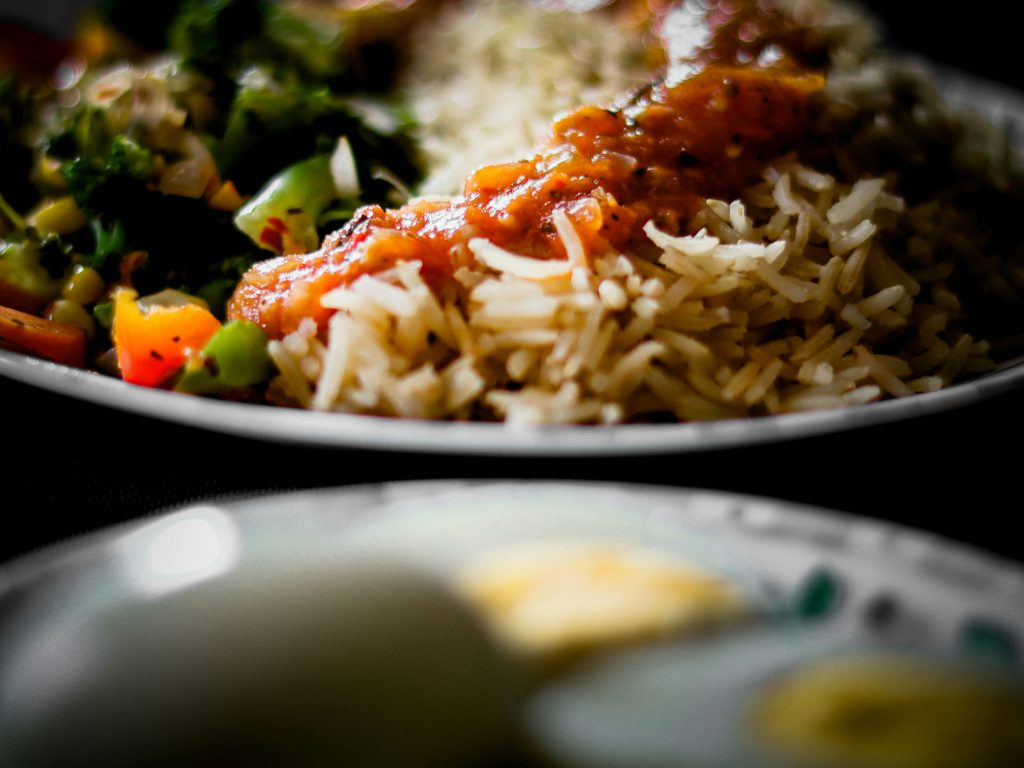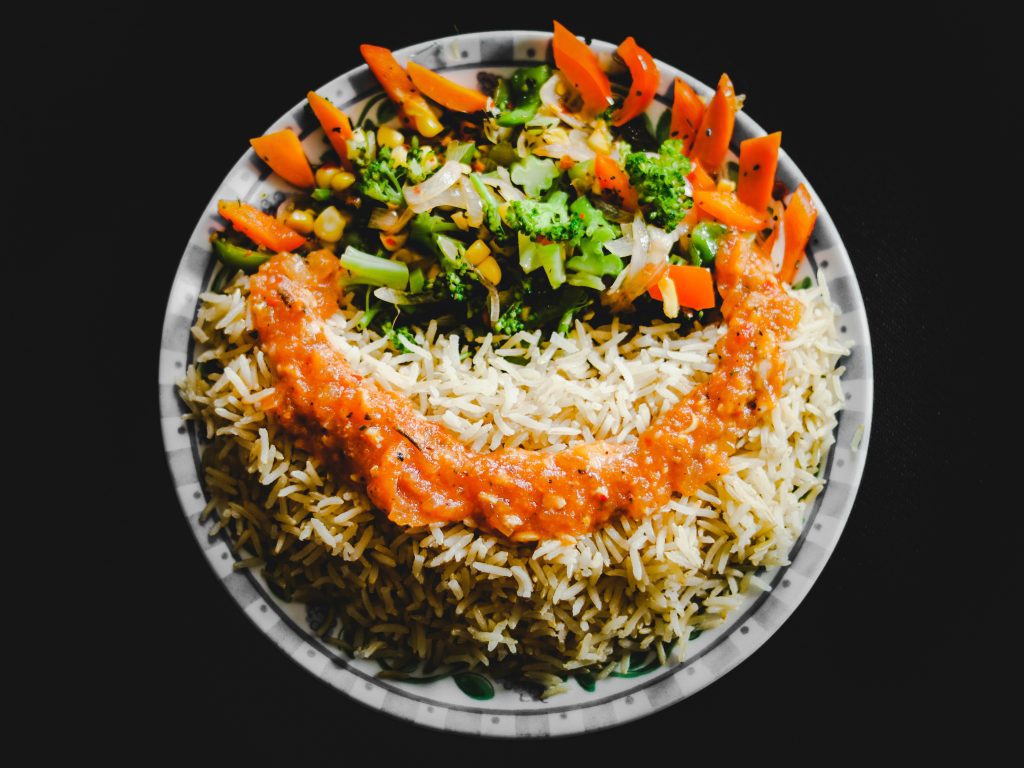Learn about 8 Health Benefits of Fried Rice You Should Know Before Eating. Discover the delicious world of fried rice, a versatile dish made from stir-fried rice, vegetables, and proteins. Learn about its ingredients, preparation methods, and health benefits in this comprehensive guide.
Introduction
Rice is a large crop feeding more than half of the world’s population. It belongs to the genus Oryza and is a cereal grain growing all over the world, though Asia is the main continent. There are three categories of rice: long-grain, short-grain, and medium-grain, which are differentiated it based on taste and texture. Rices come in many varieties. These can include polished or white rice, unpolished or brown rice, and water-growing rice called wild rice. Rice is probably one of the most visible grains in almost any cuisine or cooking style. This includes sushi and risotto.
However, rice is not just nutritious; this staple food has much more in it, and it is appreciated in many cultures around the globe. Nutrition-wise, rice is predominantly made up of carbohydrates, which is the daily fuel for their active lives. Some culinary delights contain rice because it is so easy to cook, absorbs other flavors, and is light and adaptable hence its popularity and use all over the world.
What is Fried Rice?
Fried rice is one of the very popular dishes in many countries because it can be prepared in so many different ways. It can also have a wide variety of tastes. Essentially, fried rice is a traditional Chinese food that the combination of stir-e d cooked rice with vegetables plus added meat including but are not limited to shrimp, chicken, and tofu. Its fame is however not only because it can be taken anywhere but also because there are local versions of it made for specific people and places.

Origins and History
The origins of fried rice go back more than a thousand years in China where the practice of stir-frying left-over rice with other ingredients flourished to reduce wastage of food. The first recorded written account of fried rice is from the year 604 of the Sui dynasty. Over the years, it has expanded to nearly all the countries in Asia with each country adapting the dish in its way. For example, in the country of Thailand, instead of crab meat, fried rice has lots of lime and fish sauce. In the case of Indonesia, the fried rice gets a twist where it is called Nasi goreng and comes fully dressed with sambal and fried shallots.
8 Health Benefits of Fried Rice You Should Know Before Eating
- Muscle Development: Fried rice as a meal can also assist in building muscle tissue as long as it contains enough chicken shrimp or even tofu. Those are sources of proteins which are made up of amino acids some of which enable repairing and also building muscles hence it is good after o 5 workouts. It also has rice which has carbohydrates that aid in helpful energy during recovery.
- Healthy and Smooth Skin: The different elements that make up fried rice for example vegetables and proteins aid in relishing healthier skin. Vegetables have vitamins A and C, which support skin’s elasticity and heal skin surfaces respectively. Also, certain proteins have healthy fats which enhance the quality and appearance of one’s skin.
- Great Antioxidant: Generally, fried rice is cooked with vegetables that are known to supply antioxidants to the body and prevent oxidative stress. The antioxidants protect the body from the adverse effects of free radicals, thus reducing some possibilities of chronic illnesses. The use of multiple colors of fried rice with vegetables is also effective in improving the antioxidant levels in the body, hence enhancing well-being.
- Energy Boost: Being a carbohydrates-laden meal, fried rice can be conveniently used to provide an energy boost which makes it suitable for use by active individuals. All the carbohydrates in rice when consumed are eventually converted into glucose which is energy to the body. Also, with the addition of proteins and vegetables, energy levels are even higher enabling both physical and mental activities for the whole day.
- Treats Dysentery: Fried rice includes several ingredients, such as ginger and garlic, that provide nutritional value because they have health-helping effects like eradicating germs in the stomach during situations like dysentery in railways. This helps in the proper functioning of that and the food digestion process. Fried rice with these components will encourage proper digestion and prevent any digestive complications from occurring.
- Bone Health: When made with healthy and fortified ingredients, fried rice is also bone-friendly food. Adding such protein foods like chicken, shrimp or tofu adds necessary nutrients beneficial in the development and maintenance of healthy bones including calcium and phosphorus. For example, mixing in after preparing the dish, green vegetables such as bok choy improves the bone nutrition of the dish.
- Eye Health: Carrots, bell peppers, and other fried rice vegetables increase vitamin A levels in the dish which benefits vision. These vegetables have carotenoids that serve to avert age-related eye problems. Such nutrients when taken in a balanced diet will help maintain the eyes in a good state.
- Boosts Immune System: Fried rice, when prepared with wholesome ingredients, helps in immunity. For example, vegetables are rich in vitamins and minerals that enhance the immune system; proteins are involved in the production of antibodies. In addition, garlic and ginger are used, which work to strengthen immunity, making it hard for the body to yield to any infection or disease at all.
How to make Fried Rice?
1. Ingredients
- Rice: The most suitable type of rice to make fried rice is the one that is at least a day old and cold. This is because such rice is less moist and will not form a lump. A bowl of freshly cooked rice, for instance, may become too soft when cooked with stirring of any sort or fry, hence, the cooked rice should be spread and cooled for eight hours to achieve the right level of softness. This guarantees no wet lump but rather a comestible with well-defined and structured ridges of rice.
- Vegetables: Many different varieties of vegetables can be added, together with a variety of cushioning and volume; some examples may include green peas, carrots, greens, and chives, among many more. The addition of all these types not only gives the dish a better look, thereby creating much interest in eating it, but also increases the nutritional value of the dish. Moreover, vegetables ensure that the torsos served will not only taste amazing but will be rather healthy as well.
- Proteins: Fried rice is often prepared with several types of protein. One can choose the meat to use in fried rice from chicken, pork, beef, shrimp, or crab, and even use tofu for vegetarians. These compliments contribute to the taste and texture of the dish as well as provide important nutrients. This also favors the choice of protein since it can be tailored to one’s tastes or what is available, therefore making it convenient.
- Seasonings: Soy sauce is by far the most popular condiment for fried rice, lending a savory flavor that deepens in the complex. Other seasonings such as oyster sauce, sesame oil, and chopped garlic can also be added to improve the overall taste. All these elements add to the umami balance of the dish, thereby making it more delectable.
- Eggs: Fried rice is normally served with eggs which have been scrambled into the rice and this incorporates a rich and creamy aspect in the dish. They also help in the provision of protein and hold the ingredients in place. The addition of eggs is an appetizing factor and also fills one up which is something everyone can appreciate.

2. Cooking Method
Preparation
The first stage of frying rice involves the preparation of the necessary components. Always use rice that has been left for a day or more – otherwise, too much moisture would make the rice sticky and clumped. Slice vegetables and meat into small and even pieces for cooking even distribution, thus preparing a more appropriate and appetizing dish.
Stir-Frying
Then the cooking proceeds by carrying the heating oil in a wok or large pan on a medium-high flame. Put in the proteins first and fry them while stirring until they turn golden brown and well done. After that is complete, they take them out and place them on another surface. This helps in ensuring that the proteins do not dry out or lose their taste in the process.
Vegetables
To the same pan where the proteins were added, add the mixed vegetables and sauté until cooked, but still crisp. This also helps in enhancing their taste. When these two are added, they have a distinct purpose, as they will help to build certain flavors within the fried rice itself.
Rice
When the vegetables are soft enough, a day-old and cooled rice may be added to the pan while breaking it into smaller pieces using a spatula. Stir-fry the rice up to the point that rice is evenly distributed and heated with the vegetables. This part is important to get the right mouthfeel of the dish and avoid the dish from getting too watery.
Seasoning
Pour some soy sauce along with other spices of your choice over the rice mixture and spread it evenly. With the help of a spatula, mix well so that all the ingredients and their flavors are absorbed – which is the purpose of this step. This comes to increase the taste of the fried rice which is loved by almost every individual for its umami flavour.
Finish
At last, add the previously cooked proteins that have been removed from the heat in the previous steps. You can also add scrambled eggs at this point, mixing thoroughly and heating until the eggs are incorporated with the rest of the dish. This last step incorporates everything into one appetizing and tasty meal that is now ready for serving.
5 Ways Consuming Late-Night Fried Rice Disrupts Your Health
1. Digestive Issues
Eating fried rice later in the night may lead to digestive problems such as bloating or indigestion. This is due to their content which includes heavy fats and spices that are mostly present in fried rice. It also makes one feel uncomfortable due to the slowness of digestion. Moreover, eating a large portion of food towards bedtime increases the chances of having gastrointestinal complications as it makes it hard to digest food while asleep.
2. Weight Gain
Eating late into the night especially if it is food such as fried rice can cause one to gain excess weight. It is because the consumption of high-energy dense foods is not offset by any physical activity that leads to burning off the energy. Before long, this behavior will lead to the accumulation of more body fat and make it hard to control body weight.
3. Disordered Sleeping
Also, eating fried rice late in the night can greatly affect your sleeping patterns. These conditions arise mainly because of the high carbohydrate and fat content, which produces a lot of sugar in the blood making it hard to relax or fall asleep. Most of the time, the need to digest the heavy meal makes one uncomfortable, resulting in poor sleep quality and tiredness the following day.
4. High Risk of Heart Diseases
Fried rice is typically high in unhealthy oils and sodium, both of which have the potential to elevate cholesterol and blood pressure. Eating such meals regularly, particularly at night, exacerbates the chances of developing heart ailments. Above all, unhealthy fat accumulation is associated with dietary-related arterial obstruction after certain periods, bearing negative health ramifications.
5. Metabolic Disorders
Eating fried rice very often and late at night may lead to a reduction in metabolic health. Consumption of high-calorie yet very poor nutrition foods brings about the risk of the body resisting insulin, which is a sign of diabetes. Again, worrisome weight gain with impaired sleep also adds to these metabolic distortions, hence the risk of type 2 diabetes and metabolic syndrome is revealed.

FAQs
Can I use leftover fried rice?
Fried rice leftovers are not thrown away, with new ingredients like fresh vegetables, proteins, or even sauces, leftovers can once again come back to life with a new flavor. Eating reheated fried rice is always helpful for a person who has little time to prepare meals and wants to minimize food wastage.
What type of rice is best for fried rice?
The best type of rice for fried rice is the one that was prepared a day earlier and stored in the fridge. This is because the rice is more dried and does not form any lumps. When freshly prepared rice is stir-fried, it becomes slushy. This is the reason why people need to overnight keep the rice in the fridge, which helps in achieving a firm texture without the rice grains sticking to each other while cooking.
Is fried rice healthy?
Fried rice can be considered to be a nutritious dish as long as it is made with plenty of vegetables and lean meat. It contains essential vitamins and minerals, carbohydrates to supply energy, and protein which helps tone the body’s musculature. Still, care should be exercised on the portion sizes of the meals served, cooking oil, or sauce used.
Can fried rice be made vegetarian or vegan?
Yes, assuming there are no animal ingredients, fried rice can also be called vegan by adding some tofu or tempeh. Vegetables in abundance together with vegan sauces will ensure that no one goes hungry, regardless of their eating habits.
Conclusion
Fried rice is a dish that can be relished by everyone without any kind of impedance. It can be prepared according to taste buds and also special diets because whatever protein, vegetable, or aromatic seasoning one wishes, it offers. Fried rice, as a main course, or as a side dish, fills the well of taste with something convenient and healthy at the same time. Knowing the origins and preparation methods used in that dish helps recognize the depth and variety it may carry from this simplicity.
